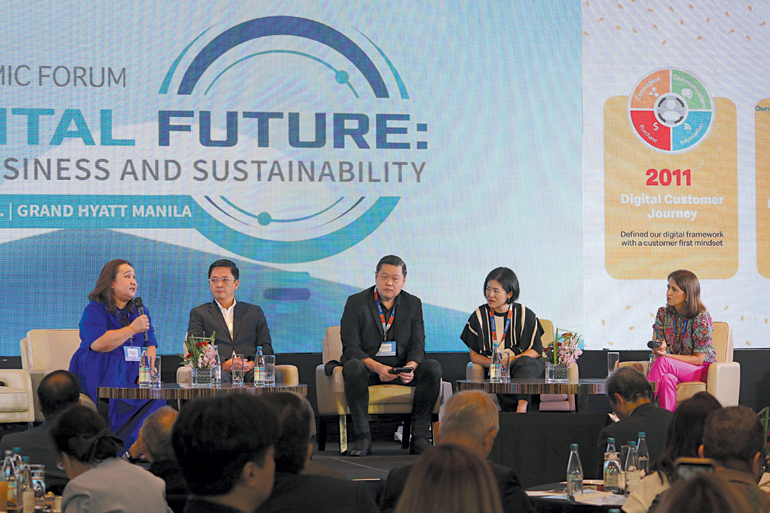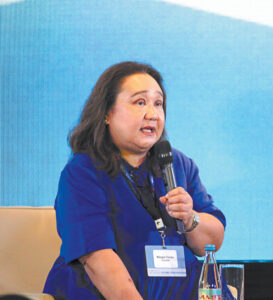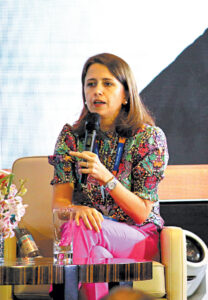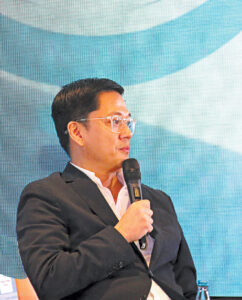Customer experience as the center of digital transformation

Chelsey Keith P. Ignacio, Special Features and Content Assistant Editor
Regardless of the brand, businesses now have to show their existence in the digital space. Hence, they set up their own websites, maintain a presence across social media, market through e-commerce, and maximize the variety of platforms available online.
Most of these efforts to digitalize are being made for customers. Besides, these people are the ones who browse through their online presence and purchase their products or services. And digitalization has generated new ways for customers to experience a brand.
Customers are also at the heart of the discussion of different brands in a talk on “Harnessing Digital Technology to Improve World-Class Brands, Marketing and Consumer Experiences” during this year’s BusinessWorld Economic Forum on May 25.

First, you need to collect the right data. You need to know about your customer. Then, you change how your organization works.
— YUKIKO TSUKAMOTO, Partner, BAIN & COMPANY
Digitalization is significant for customers, said Yukiko Tsukamoto, a partner at Bain & Company. “It’s because consumers, fundamentally, are very needy. And their expectation is going up.”
Nowadays, consumers want to get several services they need, such as shopping and banking, through digital platforms whenever and wherever they are. But to add to these, Ms. Tsukamoto noted that consumers also expect brands to know about their history and preference, as well as to treat them well.
“So, [there is] very high expectation from the consumer. And [fulfilling] these are not possible without digital solutions,” she said.
“We strongly believe digital and customer experience go hand in hand,” she added.
Ana Maria A. Delgado, senior executive vice-president, chief customer experience officer, and chief digital channels officer at Union Bank of the Philippines (UnionBank), implied that the transformation of brands to digital is for consumers’ experiences.
“It probably should not have been called a digital transformation. It should have been called a customer experience transformation. Because digital is just an enabler, technology is only an enabler,” Ms. Delgado said.
And since customer experiences should be at the center of digital transformation, McDonald’s Philippines Managing Director Margot Torres believed that marketers should take the initiative.

To marketers, you really have to take the lead. If there’s anyone in the organization that should know about digitalization, it should be marketing, because it’s really about the customer experience.
— MARGOT TORRES, Managing Director, MCDONALD’S PHILIPPINES
“To marketers, you really have to take the lead. If there’s anyone in the organization who will understand what we call digital transformation, it would be marketing,” she said. “Because in the end, it’s really about the customer experience.”
Ms. Torres emphasized further that it is not about the technology, but the people. And this includes the employees.
“No matter how wonderful or groundbreaking the technology will be if your own employees or consumers cannot adopt it, it will just all be a great idea that this is a groundbreaking technology,” she said.
Challenges of transformation
But even as brands have a full grasp on why digital is valuable to augment customer experience, the transformation to undertake might also involve challenges.
“The biggest challenge is really internal change,” Ms. Tsukamoto of Bain & Company said.
Although businesses may find it difficult to make changes, she shared that many companies were able to do it well. And these businesses tend to have a strong leadership team, as well as being prompt in ensuring that customers’ feedback reaches employees so that the latter are encouraged to change.
In relation to that, UnionBank’s Ms. Delgado considered changing the people’s mindset and getting them to do it could be a challenge. This is because doing so might be scary or uneasy for them for personal reasons, like the fear of losing their jobs because of technologies being adopted.
“So the first thing that needs to be overcome is how do you change people’s mindset and get by it,” she said.
Another challenge she and Ms. Torres of McDonald’s Philippines pointed out was having a “digital savior” in one’s organization, or someone to be depended on for the digital transformation.
“You cannot have a digital savior. Everybody in the organization has to buy in because customer experience is not delivered by one group. It is delivered by the combination of all the different touchpoints or moments across your brand, starting with people’s word of mouth, seeing your ads, going to your website or your store, all the way to customer service. So everybody in the organization has to understand their role in delivering on that. That’s why it would start with the mindset,” Ms. Delgado said.
“Don’t think that a digital savior will solve their problems. It’s not going to rest on one person,” said Ms. Torres. “For a service industry like ours, it really involves cutting across the organization.”
Businesses might also feel overwhelmed by transformation, another challenge observed by Ms. Torres.
“Companies will either get overwhelmed, like there are so many things I need to do,” she said. “So, we always embrace a progress-over-perfection philosophy.”
Starting the digital journey
Despite these challenges to be faced especially at the start, brands have to nonetheless begin their journey of digital transformation for their customers.

Digital technology is only an enabler. When we talk about world-class marketing, we need to start with a vision. Then, you work backwards on how to deliver that.
— ANA MARIA A. DELGADO, Senior Executive Vice-President, Chief Customer Experience Officer and Chief Digital Channels Officer, UNION BANK OF THE PHILIPPINES
While UnionBank’s Ms. Delgado believed that businesses could still get by without undergoing digitalization, she expounded on two reasons to get them started.
One of the reasons is that “digital has the ability to grow your business exponentially,” she said.
In addition, brands that would not be able to start their digitalization would be left behind, especially as technology has been rapidly advancing.
“Things are progressing so fast. You cannot go from zero digital to AI (artificial intelligence) even in the span of one year. It is a layering process of capabilities, making sure you have the infrastructure, the mindset, the learning, and the ability to unlearn. Those are all muscles that need to be built over time. So, if you haven’t started now, it’s time to start,” she said.
Businesses should also start to be online because a lot of consumers in the Philippines are there, said Vince Yamat, managing director of 917Ventures.
“The Philippines [has] 110 million Filipinos, 72% Internet penetration, 10 hours a day on the Internet… four hours of that one is on social media,” he said. “Last year, per the BSP (Bangko Sentral ng Pilipinas), 30% of payments is already digital. This year, we predict that it’s going to be 50% digital.”
According to the BSP, the share of digital payments in the total volume of retail transactions in the country rose to 30.3% in 2021.
BusinessWorld recently reported that BSP Deputy Governor and Payments and Currency Management Sector Head Mamerto E. Tangonan said that such share of digital payments last year was higher than the 30.3% seen in 2021 and that they are “confident” of reaching the 50% mark by this year.
To recall, the cental bank aims for 50% of all transactions both in volume and value to be taken up by digital payments by 2023.
According to DataReportal’s report earlier this year, the country’s Internet penetration was at 73.1% with 85.16 million Internet users. And Filipino Internet users aged 16 to 64 are spending an average of nine hours and 14 minutes using the Internet every day, the third highest amount of time spent on the Internet among countries globally. Filipinos also spend three hours and 43 minutes using social media daily.
Meanwhile, the central bank said last year that digital payments accounted for 30.3% of the total volume of retail transactions in 2021, up from its 20.1% share in 2020. The BSP targets to digitalize 50% of retail payments this year.

If Filipinos spend most of their waking time online, then everything should be online.
— VINCE YAMAT, Managing Director, 917VENTURES
“If you look at all of those stats, if Filipinos spend most of their waking hours online, every business should be on the Internet,” said Mr. Yamat.
In starting digitalization, Mr. Yamat said that businesses should figure out the purpose of this initiative.
“Always start with your why, your purpose, why are you doing things,” he said. “For us, we just really want to uplift the lives of Filipino people.”
Brands should also leverage data to enhance customer experience through digital.
“Maximize your data, whatever data you have. Have a look at it, use it to your advantage because the customers will not tell you what they want. You will have to talk to them, and literally see and observe why are they doing things,” Mr. Yamat said.
Meanwhile, for Ms. Torres of McDonald’s, businesses should start with a look at the most painful points among their customers, as well as employees and shareholders.
“You will probably identify already three pain points among those three stakeholders. Then you’ll know where to start. Or you’ll identify a lot of solutions, then you can map it out against how much resource you need to invest and how easy is it to execute. And that will already tell you how to prioritize and to sequence the initiatives, then commit to the journey,” she said.
“When you start and take off those initiatives and address the pain points, it doesn’t mean it’s done. It’s really continuous because technology gets updated and our customers’ needs change,” she added.
